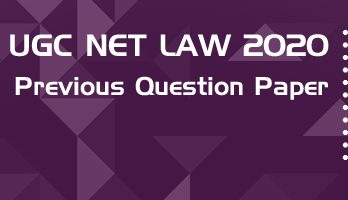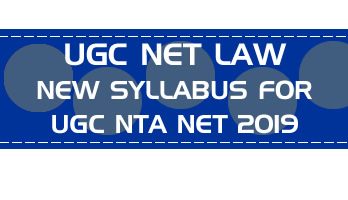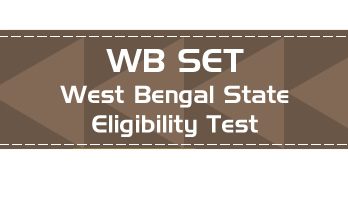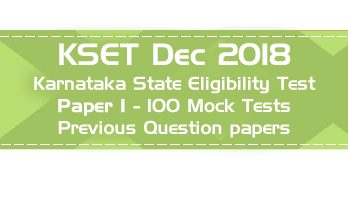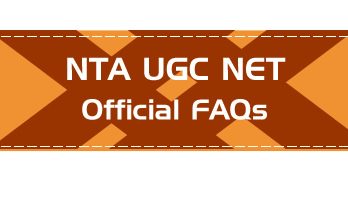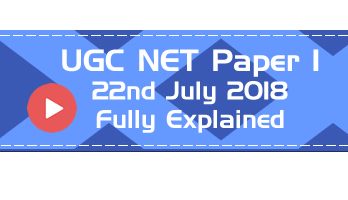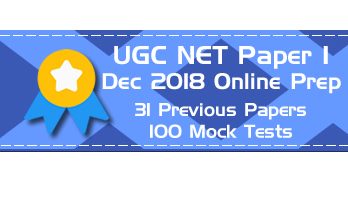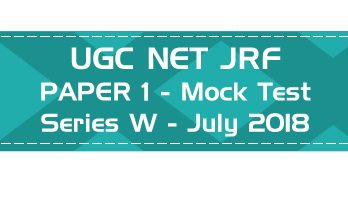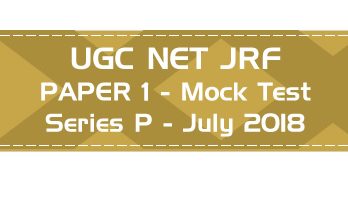- Latest Pattern Mock Tests including comprehension based questions
- Previous Question Papers with Answer Keys - From 2004 till the most recent exam
- 75 Full Length Mock Tests - New Pattern Paper II, with 100 questions each
- 50 Mini Practice Mock tests - with 25 questions each
- Unlimited Practice - New Questions in every attempt of all mocks
- Questions & Answer Choices randomly shuffled in every attempt for better practice
- Database of over 11000+ MCQs covering the entire syllabus
- Unlimited access and practice for one year from the date of purchase
- Accessible 24 x 7 via Smart-Phone browsers and Desktops
Authentic Feedback from previous LawMint users :
I got AIR 21 in CLAT PG. Thank you so much. Your mocks helped me a lot in my preparation 🙂 - Ayushi Jain
I have subscribed to your CLAT PG program and got AIR 36 in this year CLAT PG. I have also secured AIR 54 in AILET PG exam. I would like to thank you. Your mock paper really helps a lot - Shrashank Tripathi
I would like to thank you for the CLAT PG LLM COURSE. Practising mock tests there helped me in getting confidence and hence I was able to get AIR 45 in CLAT PG LLM - Akshay Awasthi
A year back, I relied on the IIT Kharagpur RGSOIPL mock test series by LawMint to prepare for my RGSOIPL entrance test. Few months back, I relied on your UGC NET Law series to prepare for UGC NET. I was the topper of the RGSOIPL entrance, and have cracked JRF in UGC NET. All thanks to LawMint - Anshuman Sahoo
"I got AIR 18 in CLAT PG and General Category rank 28 in AILET PG. I want to thank you for helping me practice well in controlled conditions from any place. It gave me a lot of confidence and I took the tests while travelling too. I also made it to IIT Kharagpur." - Vinodharani
"Lawmint has been of great help to me in securing AIR 25 in AILET PG and AIR 29 in CLAT PG examinations. The subjective and objective approach of the test series kept me up to date with the latest exam pattern." - Bhawna Nanda
"I, Nimmy Saira Zachariah joined you clat test series. I cleared AILET PG with 30th rank. Your test series were of immense help as it gave me clear idea of where my preparations stand thank you once again law mint." - Nimmy S Z
"Hey guys. Where do I start? If I thought that getting AIR 59 in Clat PG was it, then how wrong I was. With Lawmint now I have cracked UGC NET as well." - Joyanta Chakraborty
Note : Answer Keys to all Previous Question Papers published on LawMint are available to registered users of LawMint.com Online Practice Packs.
Check out all the HECI NTA NET or UGC CBSE NET Paper 1 previous question papers here : Previous Papers & Mock Tests
Note : UGC has rolled out a revised syllabus for both Papers 1 & 2 from Jan 2019 onward.
1. Break-down in verbal communication is described as
– Short Circuit
– Contradiction
– Unevenness
– Entropy
2. The Telephone Model of Communication was first developed in the area of
– Technological theory
– Dispersion theory
– Minimal effects theory
– Information theory
3. The Dada Saheb Phalke Award for 2013 has been conferred on
– Karan Johar
– Amir Khan
– Asha Bhonsle
– Gulzar
4. Photographs are not easy to
– Publish
– Secure
– Decode
– Change
5. The grains that appear on a television set when operated are also referred to as
– Sparks
– Green Dots
– Snow
– Rain Drops
6. In circular communication, the encoder becomes a decoder when there is
– Noise
– Audience
– Criticality
– Feedback
7. In a post-office, stamps of three different denominations of Rs 7, Rs 8, Rs 10 are available. The exact amount for which one cannot buy stamps is
– 19
– 20
– 23
– 29
8. In certain coding method, the word QUESTION is encoded as DOMESTIC. In this coding, what is the code word for the word RESPONSE?
– OMESUCEM
– OMESICSM
– OMESICEM
– OMESISCM
9. lf the series 4,5,8,13,14,17,22,…….. is continued in the same pattern, which one of the following is not a term of this series?
– 31
– 32
– 33
– 35
10. Complete the series BB, FE, II, ML, PP: ……….by choosing one of the following option given :
– TS
– ST
– RS
– SR
11. A man started walking frorn his house towards south. After walking 6 km, he turned to his left walked 5 Km after. Then he walked further 3 km after turning left. He then turned to his left and continued his walk for 9 km. How far is he away from his house?
– 3 km
– 4 km
– 5 km
– 6 km
12. One writes all numbers from 50 to 99 without the digits 2 and 7. How many numbers have been written?
– 32
– 36
– 40
– 38
13. “lf a large diamond is cut up into little bits it will lose its value just as an army is divided up into small units of soldiers. It loses its strength.” The argument put above may be called as
– Analogical
– Deductive
– Statistical
– Casual
14. Given below are some characteristics of logical argument. Select the code which expresses a characteristic which is not of inductive in character.
– The conclusion is claimed to follow from its premises.
– The conclusion is based on causal relation.
– The conclusion conclusively follows from its premises.
– The conclusion is based on observation and experiment
15. If two propositions having the same subject and predicate terms can both be true but cannot both be false, the relation between those two propositions is called
– contradictory
– contrary
– subcontrary
– subaltern
16. Given below are two premises and four conclusions drawn from those premises. Select the code that expresses conclusion drawn validly from the premises (separately or jointly).
Premises:
(a) All dogs are mammals.
(b) No cats are dogs.
Conclusions:
(i) No cats are mammals
(ii) Some cats are mammals.
(iii) No Dogs are cats
(iv) No dogs are non-mammals.
– (i) only
– (i) and (ii)
– (iii) and (iv)
– (ii) and (iii)
17. Given below is a diagram of three circles A, B & C inter-related with each of Indians.
The circle B represents the class of scientists and circle C represents the class of politicians. p,q,r,s… represent different regions. Select the code containing the region that indicates the class of Indian scientists who are not politicians.
– q and s only
– s only
– s and r only
– p, q and s only
18. Read the following table and answer the question below based on table
| Year | Government canals | Private canals | Tanks | Tube wells & other wells | Other sources | Total |
| 1997-98 | 17117 | 211 | 2593 | 32090 | 3102 | 55173 |
| 1998-99 | 17093 | 212 | 2792 | 33988 | 3326 | 57411 |
| 1999-00 | 16842 | 194 | 2535 | 34623 | 2915 | 57109 |
| 2000-01 | 15748 | 203 | 2449 | 33796 | 2880 | 55076 |
| 2001-02 | 15031 | 209 | 2179 | 34906 | 4347 | 56672 |
| 2002-03 | 13863 | 206 | 1802 | 34250 | 3657 | 53778 |
| 2003-04 | 14444 | 206 | 1908 | 35779 | 4281 | 56618 |
| 2004-05 | 14696 | 206 | 1727 | 34785 | 7453 | 58867 |
| 2005-06 | 15268 | 207 | 2034 | 35372 | 7314 | 60196 |
Which of the following sources of Irrigation has registered the largest percentage of decline in Net area under irrigation during 1997-98 and 2005-06 ?
– Government Canals
– Private Canals
– Tanks
– Other Sources
19. Read the following table and answer the question below based on table
| Year | Government canals | Private canals | Tanks | Tube wells & other wells | Other sources | Total |
| 1997-98 | 17117 | 211 | 2593 | 32090 | 3102 | 55173 |
| 1998-99 | 17093 | 212 | 2792 | 33988 | 3326 | 57411 |
| 1999-00 | 16842 | 194 | 2535 | 34623 | 2915 | 57109 |
| 2000-01 | 15748 | 203 | 2449 | 33796 | 2880 | 55076 |
| 2001-02 | 15031 | 209 | 2179 | 34906 | 4347 | 56672 |
| 2002-03 | 13863 | 206 | 1802 | 34250 | 3657 | 53778 |
| 2003-04 | 14444 | 206 | 1908 | 35779 | 4281 | 56618 |
| 2004-05 | 14696 | 206 | 1727 | 34785 | 7453 | 58867 |
| 2005-06 | 15268 | 207 | 2034 | 35372 | 7314 | 60196 |
Find out the source of irrigation that has registered the maximum improvement in terms of percentage of Net irrigated area during 2002-03 and 2003-04.
– Government Canals
– Tanks
– Tube Wells and other wells
– Other Sources
20. Read the following table and answer the question below based on table
| Year | Government canals | Private canals | Tanks | Tube wells & other wells | Other sources | Total |
| 1997-98 | 17117 | 211 | 2593 | 32090 | 3102 | 55173 |
| 1998-99 | 17093 | 212 | 2792 | 33988 | 3326 | 57411 |
| 1999-00 | 16842 | 194 | 2535 | 34623 | 2915 | 57109 |
| 2000-01 | 15748 | 203 | 2449 | 33796 | 2880 | 55076 |
| 2001-02 | 15031 | 209 | 2179 | 34906 | 4347 | 56672 |
| 2002-03 | 13863 | 206 | 1802 | 34250 | 3657 | 53778 |
| 2003-04 | 14444 | 206 | 1908 | 35779 | 4281 | 56618 |
| 2004-05 | 14696 | 206 | 1727 | 34785 | 7453 | 58867 |
| 2005-06 | 15268 | 207 | 2034 | 35372 | 7314 | 60196 |
In which of the following years, Net irrigation by tanks increased at the highest rate?
– 1998-99
– 2000-01
– 2003-04
– 2005-06
21. Read the following table and answer the question below based on table
| Year | Government canals | Private canals | Tanks | Tube wells & other wells | Other sources | Total |
| 1997-98 | 17117 | 211 | 2593 | 32090 | 3102 | 55173 |
| 1998-99 | 17093 | 212 | 2792 | 33988 | 3326 | 57411 |
| 1999-00 | 16842 | 194 | 2535 | 34623 | 2915 | 57109 |
| 2000-01 | 15748 | 203 | 2449 | 33796 | 2880 | 55076 |
| 2001-02 | 15031 | 209 | 2179 | 34906 | 4347 | 56672 |
| 2002-03 | 13863 | 206 | 1802 | 34250 | 3657 | 53778 |
| 2003-04 | 14444 | 206 | 1908 | 35779 | 4281 | 56618 |
| 2004-05 | 14696 | 206 | 1727 | 34785 | 7453 | 58867 |
| 2005-06 | 15268 | 207 | 2034 | 35372 | 7314 | 60196 |
Identify the source of irrigation that has recorded the maximum incidence of negative growth in terms of Net irrigated area during the years given in the table.
– Government Canals
– Private Canals
– Tube Wells and other wells
– Other sources
22. Read the following table and answer the question below based on table
| Year | Government canals | Private canals | Tanks | Tube wells & other wells | Other sources | Total |
| 1997-98 | 17117 | 211 | 2593 | 32090 | 3102 | 55173 |
| 1998-99 | 17093 | 212 | 2792 | 33988 | 3326 | 57411 |
| 1999-00 | 16842 | 194 | 2535 | 34623 | 2915 | 57109 |
| 2000-01 | 15748 | 203 | 2449 | 33796 | 2880 | 55076 |
| 2001-02 | 15031 | 209 | 2179 | 34906 | 4347 | 56672 |
| 2002-03 | 13863 | 206 | 1802 | 34250 | 3657 | 53778 |
| 2003-04 | 14444 | 206 | 1908 | 35779 | 4281 | 56618 |
| 2004-05 | 14696 | 206 | 1727 | 34785 | 7453 | 58867 |
| 2005-06 | 15268 | 207 | 2034 | 35372 | 7314 | 60196 |
In which of the following years, share of the tube wells and other wells in the total net irrigated area was the highest?
– 1998-99
– 2000-01
– 2002-03
– 2004-05
23. The acronym FTP stands for
– File Transfer Protocol
– Fast Transfer Protocol
– File Tracking Protocol
– File Transfer Procedure
24. Which one of the following is not a/an image/graphic file format?
– PNG
– GIF
– BMP
– GUI
25. The first Web Browser is
– Internet Explorer
– Netscape
– World Wide Web
– Firefox
26. When a computer is booting, BIOS is loaded to the memory by
– RAM
– ROM
– CD-ROM
– TCP
27. Which one of the following is not the same as the other three?
– MAC address
– Hardware address
– Physical address
– IP address
28. Identify the IP address from the following
– 300.215.317.3
– 302.215@417.5
– 202.50.20.148
– 202-50-20-148
29. The population of India is about 1.2 billion. Take the average consumption of energy per person per year in India as 30 Mega Joules. If this consumption is met by carbon based fuels and the rate of carbon emissions per kilojoule is l5 x I06 kgs, the total carbon emissions per year from India will be
– 54 million metric tons
– 540 million metric tons
– 5400 million metric tons
– 2400 million metric tons
Answer: (Wrong Question)
30. Which of the following cities has been worst affected by urban smog in recent times?
– Paris
– London
– Los Angeles
– Beijing
31. The primary source of organic pollution in fresh water bodies is
– run-off urban areas
– run-off from agricultural forms
– sewage effluents
– industrial effluents
32. ‘Lahar’ is a natural disaster involving
– eruption of large amount of material
– strong winds
– strong water waves
– strong wind and water waves
33. In order to avoid catastrophic consequences of climate change, there is general agreement among the countries of the world to limit the rise in average surface temperature of earth compared to that of pre-industrial times by
– 1.5 to 2 degree C
– 2.0 to 3.5 degree C
– 0.5 to 1.0 degree C
– 0.25 to 0.5 degree C
34. The National Disaster Management Authority functions under the Union Ministry of
– Environment
– Water Resources
– Home Affairs
– Defence
35. Match List – I and List – II and select the correct answer from the codes given below:
List – I
(a) Flood
(b) Drought
(c) Earthquake
(d) Volcano
List – II
(1) Lack of rainfall of sufficient duration
(2) Tremors produced by the passage of vibratory waves through the rocks of the earth
(3) A vent through which molted substances come out
(4) Excess rain and uneven distribution of water
Choose the answer that corresponds to the sequence (a) (b) (c) (d)
– 4 1 2 3
– 2 3 4 1
– 3 4 2 1
– 4 3 1 2
36. Which one of the following green house gases has the shortest residence time in the atmosphere?
– Chlorofluorocarbon
– Carbon dioxide
– Methane
– Nitrous oxide
37. Consider the following statements and select the correct answer from the code given below:
(i) Rajasthan receives the highest solar radiation in the country.
(ii) India has the fifth largest installed wind power in the world.
(iii) The maximum amount of wind power is contributed by Tamil Nadu.
(iv) The primary source of uranium in India is Jaduguda.
– (i) and (ii)
– (i), (ii) and (iii)
– (ii) and (iii)
– (i) and (iv)
38. Who among the following is the defacto executive head of the planning Commission?
– Chairman
– Deputy Chairman
– Minister of State of Planning
– Member Secretary
39. Education as a subject of legislation figures in the
– Union List
– State List
– Concurrent List
– Residuary Powers
40. Which of the following are Central Universities?
1. Pondicherry University
2. Vishwa Bharati
3. H.N.B. Garhwal University
4. Kurukshetra University
– 1, 2 and 3
– 1, 3 and 4
– 2, 3 and 4
– 1, 2 and 4
41. Consider the statement which ls followed by two arguments (i) and (ii).
Statement: India should have a very strong and powerful Lokpal.
Arguments:
(i) Yes, it will go a long in eliminating corruption in bureaucracy.
(ii) No; it will discourage honest officers from making quick decisions.
– Only argument (i) is strong.
– Only argument (ii) is strong.
– Both the arguments are strong.
– Neither of the arguments is strong.
42. Which of the following universities has adopted the meta university concept?
– Assam University
– Delhi University
– Hyderabad University
– Pondicherry University
43. Which of the following statements are correct about a Central University?
1. Central University is established under an Act of Parliament.
2. The President of India acts as the visitor of the University.
3. President has the power to nominate some members to the Executive Committee or the Board of Management of the University.
4. The President occasionally presides over the meetings of the Executive Committee or Court.
– 1, 2 and 4
– 1, 3 and 4
– 1, 2 and 3
– 1, 2, 3 and 4
44. Which one of the following is considered a sign of motivated teaching?
– Students asking questions
– Maximum attendance of the students
– Pin drop silence in the classroom
– Students taking notes
45. Which one of the following is the best method of teaching?
– Lecture
– Discussion
– Demonstration
– Narration
46. Dyslexia is associated with
– mental disorder
– behavioural disorder
– reading disorder
– writing disorder
47. The e-content generation for undergraduate courses has been assigned by the Ministry of Human Resource Development to
– INFLIBNET
– Consortium for Educational Communication
– National Knowledge Commission
– Indira Gandhi National Open University
48. Classroom communication is normally considered as
– effective
– cognitive
– affective
– selective
49. Who among the following propounded the concept of paradigm?
– Peter Haggett
– Von Thunen
– Thomas Kuhn
– John K. Wright
50. In a thesis, figures and tables are included in
– The appendix
– A separate chapter
– The concluding chapter
– The text itself
51. A thesis statement is
– an observation
– a fact
– an assertion
– a discussion
52. The research approach of Max Weber to understand how people create meanings in natural settings is identified as
– positive paradigm
– critical paradigm
– natural paradigm
– interpretative paradigm
53. Which one of the following is a non probability sampling?
– Simple Random
– Purposive
– Systematic
– Stratified
54. Identify the category of evaluation that assesses the learning progress to provide continuous feedback to the students during instruction.
– Placement
– Diagnostic
– Formative
– Summative
55. The research stream of immediate application is
– Conceptual research
– Action research
– Fundamental research
– Empirical research
56. Read the following passage carefully and answer the question :
Traditional Indian Values must be viewed both from the angle of the individual and from that of the geographically delimited agglomeration of peoples or groups enjoying a common system of leadership which we call the ‘State’. The Indian ‘State’s’ special feature is the peaceful, or perhaps mostly peaceful, co-existence of social groups of various historical provenances which manually adhere in a geographical, economic and political sense, without ever assimilating to each other in social terms, in ways of thinking, or even in language. Modern Indian law will determine certain rules, especially in relation to the regime of the family, upon the basis of hwo the loin-cloth is tied, or how the turban is worn, for this may identify the litigants as members of a regional group, and therefore as participants in it traditional law, though their ancestors left the region three or four centuries earlier. The use of the word ‘State’ above must not mislead us. There was no such thing as a conflict between the individual and the State, at least before foreign governments became established, just as there was no concept of state ‘sovereignty’ or of any church-and-state dichotomy.
Modem Indian ‘secularism’ has an admittedly peculiar feature: It requires the state to make a fair distribution of attention amongst all religions. These blessed aspects of India’s famed tolerance (Indian kings to rarely persecuted religious groups that the exceptions prove the rule) at once struck Portuguese and other European visitors to the West Coast of India in the sixteenth century, and the impression made upon them in this and other ways gave rise, at one remove, to the basic constitution of Thomas More’s Utopia. There is little about modern India that strikes one at once as Utopian but the insistence upon the inculcation of norms, and the absense of bigotry and institutionalized exploitation of human or natural resources, are two very different features which link the realities of India and her tradition with the essence of all Utopians.
Which of the following is a special feature of the Indian state?
– peaceful co-existence of people under a common system of leadership
– peaceful co-existence of social groups of different historical provenances attached to each other in a geographical, economical and political sense
– Social integration of all groups
– Cultural assimilation of all social groups
57. Read the following passage carefully and answer the question :
Traditional Indian Values must be viewed both from the angle of the individual and from that of the geographically delimited agglomeration of peoples or groups enjoying a common system of leadership which we call the ‘State’. The Indian ‘State’s’ special feature is the peaceful, or perhaps mostly peaceful, co-existence of social groups of various historical provenances which manually adhere in a geographical, economic and political sense, without ever assimilating to each other in social terms, in ways of thinking, or even in language. Modern Indian law will determine certain rules, especially in relation to the regime of the family, upon the basis of hwo the loin-cloth is tied, or how the turban is worn, for this may identify the litigants as members of a regional group, and therefore as participants in it traditional law, though their ancestors left the region three or four centuries earlier. The use of the word ‘State’ above must not mislead us. There was no such thing as a conflict between the individual and the State, at least before foreign governments became established, just as there was no concept of state ‘sovereignty’ or of any church-and-state dichotomy.
Modem Indian ‘secularism’ has an admittedly peculiar feature: It requires the state to make a fair distribution of attention amongst all religions. These blessed aspects of India’s famed tolerance (Indian kings to rarely persecuted religious groups that the exceptions prove the rule) at once struck Portuguese and other European visitors to the West Coast of India in the sixteenth century, and the impression made upon them in this and other ways gave rise, at one remove, to the basic constitution of Thomas More’s Utopia. There is little about modern India that strikes one at once as Utopian but the insistence upon the inculcation of norms, and the absense of bigotry and institutionalized exploitation of human or natural resources, are two very different features which link the realities of India and her tradition with the essence of all Utopians.
The author uses the word ‘State’ to highlight
– Antagonistic relationship between the state and the individual throughout the period of history.
– Absence of conflict between the state and the individuals upto a point in time.
– The concept of state sovereignty
– Dependence of religion
58. Read the following passage carefully and answer the question :
Traditional Indian Values must be viewed both from the angle of the individual and from that of the geographically delimited agglomeration of peoples or groups enjoying a common system of leadership which we call the ‘State’. The Indian ‘State’s’ special feature is the peaceful, or perhaps mostly peaceful, co-existence of social groups of various historical provenances which manually adhere in a geographical, economic and political sense, without ever assimilating to each other in social terms, in ways of thinking, or even in language. Modern Indian law will determine certain rules, especially in relation to the regime of the family, upon the basis of hwo the loin-cloth is tied, or how the turban is worn, for this may identify the litigants as members of a regional group, and therefore as participants in it traditional law, though their ancestors left the region three or four centuries earlier. The use of the word ‘State’ above must not mislead us. There was no such thing as a conflict between the individual and the State, at least before foreign governments became established, just as there was no concept of state ‘sovereignty’ or of any church-and-state dichotomy.
Modem Indian ‘secularism’ has an admittedly peculiar feature: It requires the state to make a fair distribution of attention amongst all religions. These blessed aspects of India’s famed tolerance (Indian kings to rarely persecuted religious groups that the exceptions prove the rule) at once struck Portuguese and other European visitors to the West Coast of India in the sixteenth century, and the impression made upon them in this and other ways gave rise, at one remove, to the basic constitution of Thomas More’s Utopia. There is little about modern India that strikes one at once as Utopian but the insistence upon the inculcation of norms, and the absense of bigotry and institutionalized exploitation of human or natural resources, are two very different features which link the realities of India and her tradition with the essence of all Utopians.
Which one is the peculiar feature of modern Indian ‘secularism’?
– No discrimination on religious considerations
– Total indifference to religion
– No space for social identity
– Disregard for social law
59. Read the following passage carefully and answer the question :
Traditional Indian Values must be viewed both from the angle of the individual and from that of the geographically delimited agglomeration of peoples or groups enjoying a common system of leadership which we call the ‘State’. The Indian ‘State’s’ special feature is the peaceful, or perhaps mostly peaceful, co-existence of social groups of various historical provenances which manually adhere in a geographical, economic and political sense, without ever assimilating to each other in social terms, in ways of thinking, or even in language. Modern Indian law will determine certain rules, especially in relation to the regime of the family, upon the basis of hwo the loin-cloth is tied, or how the turban is worn, for this may identify the litigants as members of a regional group, and therefore as participants in it traditional law, though their ancestors left the region three or four centuries earlier. The use of the word ‘State’ above must not mislead us. There was no such thing as a conflict between the individual and the State, at least before foreign governments became established, just as there was no concept of state ‘sovereignty’ or of any church-and-state dichotomy.
Modem Indian ‘secularism’ has an admittedly peculiar feature: It requires the state to make a fair distribution of attention amongst all religions. These blessed aspects of India’s famed tolerance (Indian kings to rarely persecuted religious groups that the exceptions prove the rule) at once struck Portuguese and other European visitors to the West Coast of India in the sixteenth century, and the impression made upon them in this and other ways gave rise, at one remove, to the basic constitution of Thomas More’s Utopia. There is little about modern India that strikes one at once as Utopian but the insistence upon the inculcation of norms, and the absense of bigotry and institutionalized exploitation of human or natural resources, are two very different features which link the realities of India and her tradition with the essence of all Utopians.
The basic construction of Thomas More’s Utopia was inspired by
– Indian tradition of religious tolerance
– Persecution of religious groups by Indian rulers
– Social inequality in India
– European perception of Indian State
60. Read the following passage carefully and answer the question :
Traditional Indian Values must be viewed both from the angle of the individual and from that of the geographically delimited agglomeration of peoples or groups enjoying a common system of leadership which we call the ‘State’. The Indian ‘State’s’ special feature is the peaceful, or perhaps mostly peaceful, co-existence of social groups of various historical provenances which manually adhere in a geographical, economic and political sense, without ever assimilating to each other in social terms, in ways of thinking, or even in language. Modern Indian law will determine certain rules, especially in relation to the regime of the family, upon the basis of hwo the loin-cloth is tied, or how the turban is worn, for this may identify the litigants as members of a regional group, and therefore as participants in it traditional law, though their ancestors left the region three or four centuries earlier. The use of the word ‘State’ above must not mislead us. There was no such thing as a conflict between the individual and the State, at least before foreign governments became established, just as there was no concept of state ‘sovereignty’ or of any church-and-state dichotomy.
Modem Indian ‘secularism’ has an admittedly peculiar feature: It requires the state to make a fair distribution of attention amongst all religions. These blessed aspects of India’s famed tolerance (Indian kings to rarely persecuted religious groups that the exceptions prove the rule) at once struck Portuguese and other European visitors to the West Coast of India in the sixteenth century, and the impression made upon them in this and other ways gave rise, at one remove, to the basic constitution of Thomas More’s Utopia. There is little about modern India that strikes one at once as Utopian but the insistence upon the inculcation of norms, and the absense of bigotry and institutionalized exploitation of human or natural resources, are two very different features which link the realities of India and her tradition with the essence of all Utopians.
What is the striking feature of modern India?
– A replica of Utopian State
– Uniform Laws
– Adherance to traditional values
– Absense of Bigotry
- Latest Pattern Mock Tests including comprehension based questions
- Previous Question Papers with Answer Keys - From 2004 till the most recent exam
- 75 Full Length Mock Tests - New Pattern Paper II, with 100 questions each
- 50 Mini Practice Mock tests - with 25 questions each
- Unlimited Practice - New Questions in every attempt of all mocks
- Questions & Answer Choices randomly shuffled in every attempt for better practice
- Database of over 11000+ MCQs covering the entire syllabus
- Unlimited access and practice for one year from the date of purchase
- Accessible 24 x 7 via Smart-Phone browsers and Desktops
Authentic Feedback from previous LawMint users :
I got AIR 21 in CLAT PG. Thank you so much. Your mocks helped me a lot in my preparation 🙂 - Ayushi Jain
I have subscribed to your CLAT PG program and got AIR 36 in this year CLAT PG. I have also secured AIR 54 in AILET PG exam. I would like to thank you. Your mock paper really helps a lot - Shrashank Tripathi
I would like to thank you for the CLAT PG LLM COURSE. Practising mock tests there helped me in getting confidence and hence I was able to get AIR 45 in CLAT PG LLM - Akshay Awasthi
A year back, I relied on the IIT Kharagpur RGSOIPL mock test series by LawMint to prepare for my RGSOIPL entrance test. Few months back, I relied on your UGC NET Law series to prepare for UGC NET. I was the topper of the RGSOIPL entrance, and have cracked JRF in UGC NET. All thanks to LawMint - Anshuman Sahoo
"I got AIR 18 in CLAT PG and General Category rank 28 in AILET PG. I want to thank you for helping me practice well in controlled conditions from any place. It gave me a lot of confidence and I took the tests while travelling too. I also made it to IIT Kharagpur." - Vinodharani
"Lawmint has been of great help to me in securing AIR 25 in AILET PG and AIR 29 in CLAT PG examinations. The subjective and objective approach of the test series kept me up to date with the latest exam pattern." - Bhawna Nanda
"I, Nimmy Saira Zachariah joined you clat test series. I cleared AILET PG with 30th rank. Your test series were of immense help as it gave me clear idea of where my preparations stand thank you once again law mint." - Nimmy S Z
"Hey guys. Where do I start? If I thought that getting AIR 59 in Clat PG was it, then how wrong I was. With Lawmint now I have cracked UGC NET as well." - Joyanta Chakraborty
Note : Answer Keys to all Previous Question Papers published on LawMint are available to registered users of our Online Practice Packs.
Check out all the HECI NTA NET or UGC CBSE NET Paper 1 previous question papers here : Previous Papers & Mock Tests


